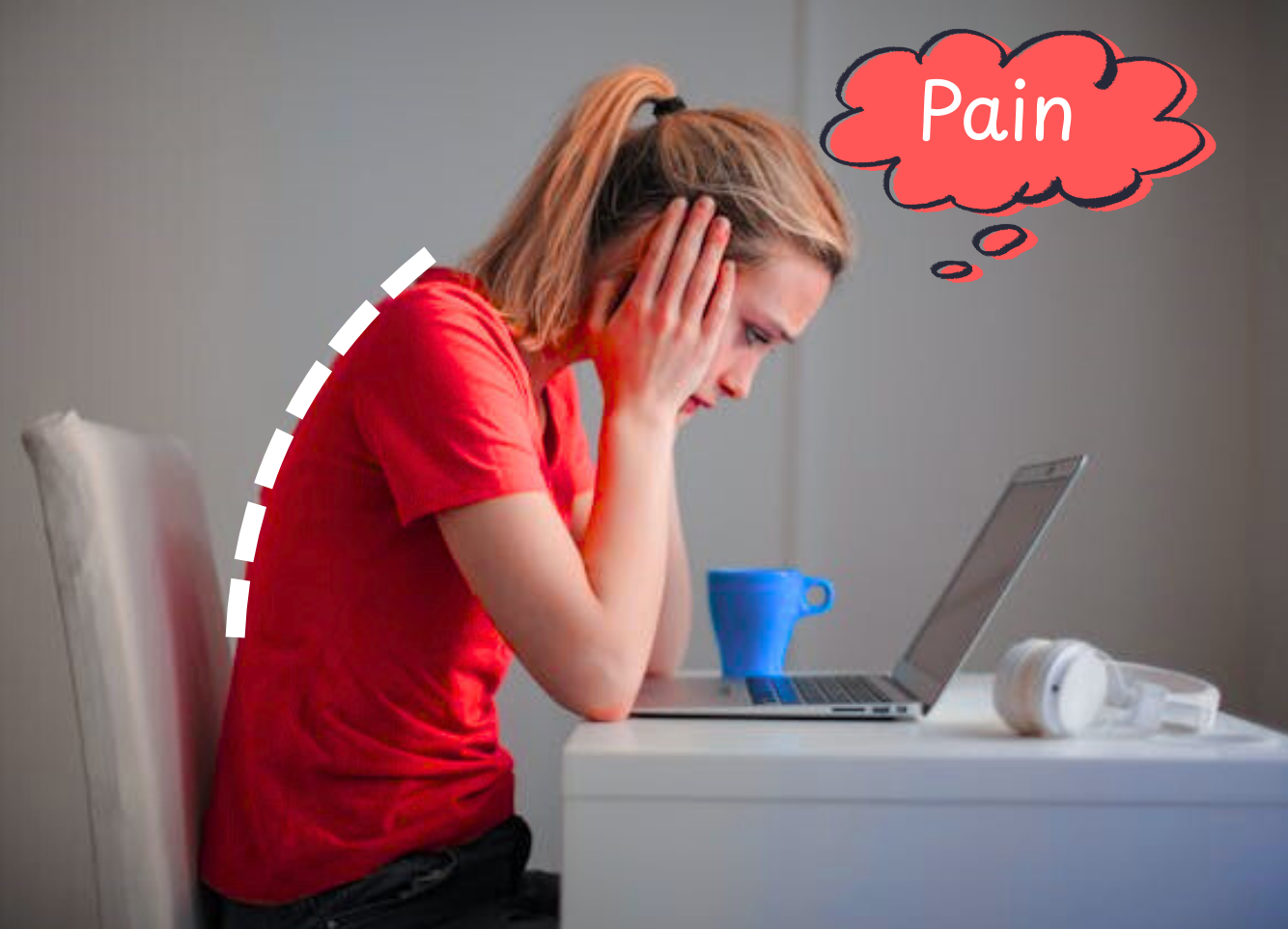 Low back pain is a widespread problem, affecting people from all walks of life. As healthcare professionals, we often encounter individuals seeking relief from this discomfort, which can significantly impact their daily activities and quality of life. Gaining a deeper understanding of the various causes of low back pain is essential, as it enables us to provide effective preventative strategies that empower individuals to take control of their own wellbeing.
Low back pain is a widespread problem, affecting people from all walks of life. As healthcare professionals, we often encounter individuals seeking relief from this discomfort, which can significantly impact their daily activities and quality of life. Gaining a deeper understanding of the various causes of low back pain is essential, as it enables us to provide effective preventative strategies that empower individuals to take control of their own wellbeing.
By identifying the key contributors to low back pain, we can equip people with the knowledge and tools necessary to make informed choices regarding their health. This proactive approach not only helps in mitigating discomfort but also fosters a culture of awareness around spinal health.
In this article, we will delve into the primary factors that lead to low back pain and share insights on practical measures that can be taken to promote a healthier, pain-free life. Understanding these elements is crucial for individuals looking to enhance their quality of life and maintain overall wellbeing.
Physical Inactivity, Muscle Weakness, and Imbalances
The muscles that support the spine play a crucial role in maintaining stability and preventing strain. When there is a lack of regular exercise, these muscles can weaken, making them less capable of providing adequate support. This can lead to imbalances between muscle groups, often caused by poor posture or a sedentary lifestyle. Such imbalances can place excessive strain on the low back, contributing to pain and discomfort. A weak core—including the abdominal and low back muscles—may fail to stabilise the spine effectively, increasing the risk of injury.
Engaging in targeted, preventative exercises can help correct these imbalances and strengthen key muscles before pain develops. Examples include planks, which improve core strength and stability; bridges, which activate the glutes and low back muscles; and bird-dog, which enhances balance and coordination while strengthening the entire core. Additionally, superman exercises reinforce spinal support. Pilates is also highly beneficial, focusing on core strength, flexibility, and posture improvement. Regular swimming is another excellent preventative activity, as it strengthens muscles without placing undue strain on the joints or spine. Incorporating these exercises into your routine can help improve overall muscle tone and prevent low back pain.
Improper Movement and Mechanical Stress
Poor body mechanics, such as incorrect lifting techniques or bad posture during everyday tasks, can place significant strain on the low back. For instance, frequently bending from the waist rather than the knees when lifting can lead to acute strain and long-term injury. Additionally, prolonged periods of sitting or standing in awkward positions can exacerbate muscle tension and misalignment.
Over time, repetitive actions coupled with poor movement can cause muscle fatigue, inflammation, and persistent pain. Everyday activities—like twisting while reaching for objects on a shelf, bending from the back when lifting groceries or loading the washing machine, or even prolonged typing at a desk—can contribute to these stresses if not performed with proper technique. Moreover, the impact of mechanical stress is often cumulative; minor daily misalignments can lead to significant discomfort over time.
Implementing ergonomic principles, such as keeping loads close to the body and maintaining a neutral spine, can help reduce the risk of injury. Being aware of body mechanics during all activities, along with practising mindful movements, is essential for preserving spinal health and preventing low back pain.
Spinal Disorders
Spinal disorders, including herniated discs, spinal stenosis, and degenerative disc disease, can profoundly impact the health of the spine. These conditions often arise due to a combination of factors such as aging, wear and tear, and lifestyle choices. A herniated disc occurs when the soft cushion between the vertebrae (the intervertebral disc) tears or ruptures, allowing the inner gel-like substance to bulge potentially compressing on nearby nerves, leading to varying degrees of discomfort or pain. Similarly, spinal stenosis involves the narrowing of the spinal canal, which can place pressure on the nerves, resulting in discomfort and mobility issues. Individuals with these disorders may experience a range of symptoms, such as low back pain, leg pain, numbness and weakness in the legs.
While some spinal disorders may require medical treatment or therapeutic interventions to alleviate symptoms and restore mobility, awareness and prevention strategies are crucial for maintaining spinal health. Encouraging regular physical activity, proper posture, and ergonomic practices can help reduce the risk of developing these conditions. Additionally, individuals should be mindful of their body mechanics during physical activities to prevent unnecessary strain on the spine. Understanding the signs and symptoms of spinal disorders enables early intervention and proactive measures to protect the spine and promote long-term wellbeing.
Lifestyle-Related Factors
A sedentary lifestyle, combined with weight gain or obesity, can significantly exacerbate low back pain. Carrying excess weight increases the load on the spine, leading to heightened stress on the discs and surrounding muscles. This additional pressure can result in discomfort and a greater likelihood of developing chronic pain.
Moreover, a lack of physical activity weakens the core and back muscles that are vital for maintaining spinal stability and posture. When these muscles are not adequately conditioned, they struggle to support the spine effectively, making it more susceptible to injuries and pain.
In addition to weight and muscle weakness, lifestyle choices—such as prolonged sitting, unhealthy eating habits, and insufficient hydration—can all contribute to the risk of low back pain. For instance, sitting for extended periods without breaks can lead to stiffness and decreased blood flow, further compromising muscle health and increasing discomfort. Likewise, a diet high in processed foods and sugars can lead to inflammation and weight gain, compounding these issues.
Implementing small lifestyle changes can be highly beneficial. Incorporating regular physical activity, even in short bursts throughout the day, can improve muscle tone and enhance overall wellbeing. Additionally, maintaining a balanced diet rich in whole foods can help manage weight and provide essential nutrients for musculoskeletal health. Staying hydrated is equally important, as it supports the health of spinal discs and aids in recovery.
By addressing these lifestyle-related factors and promoting active, healthy habits, individuals can significantly reduce their risk of low back pain and enhance their quality of life.
Injuries to Muscles and Ligaments
Sudden or awkward movements, overstretching, or physical trauma can lead to strains in the muscles or sprains in the ligaments of the low back. These injuries often occur during activities that require lifting heavy objects without proper technique or engaging in sports and physical activities without adequate warm-up. For example, abruptly lifting a heavy box or twisting the body while lifting can place excessive stress on the lower back, leading to immediate pain.
When these types of injuries occur, they typically result in localised pain, which can vary from mild discomfort to agony, along with reduced mobility. Individuals may find it difficult to perform everyday tasks, such as bending to tie shoelaces or lifting objects from the floor. In some cases, inflammation may develop in the affected area, exacerbating the pain and prolonging recovery.
Moreover, injuries to the muscles and ligaments can create a cycle of pain and stiffness, making individuals hesitant to move or engage in physical activities. This inactivity can further weaken the supporting muscles, increasing vulnerability to future injuries.
Incorporating preventive measures, such as proper warm-up routines, stretching exercises, and techniques for lifting and carrying heavy loads, can significantly reduce the risk of such injuries. Staying aware of body mechanics during all activities, from exercise to everyday chores, is crucial for protecting the spine and maintaining overall musculoskeletal health.
Posture, Ergonomics, and Workplace Wellbeing
In modern workplaces, poor posture and suboptimal ergonomics are common contributors to low back pain. Sitting for extended periods without proper posture, especially in poorly designed workspaces, can place strain on the spine and supporting muscles. Prolonged sitting increases pressure on the lumbar discs, which can aggravate discomfort and increase the risk of injury.
To mitigate these risks, it’s essential to ensure that workstations are ergonomically optimised. Conducting DSE (Display Screen Equipment) workstation assessments can identify potential hazards, ensuring that chairs, desks, and equipment are set up to support healthy posture. For example, using an ergonomic chair with lumbar support, keeping the top of the monitor(s) at eye level, and maintaining correct keyboard and mouse placement can significantly reduce stress on the low back.
In addition to proper ergonomic setups, incorporating micro-breaks and regular movement throughout the day is vital. Even small changes, such as standing and stretching every 30-60 minutes, can reduce muscle tension and improve circulation. Our accredited DSE courses educate employees on proper workstation habits and help to prevent the onset of back pain, contributing to both individual wellbeing and overall workplace productivity.
Wellbeing workshops that focus on good ergonomics at home or in the office can further support employees by addressing the physical, mental, and emotional factors that contribute to physical tension. Stress management plays a key role in reducing the muscular tension that can build up in the low back, ensuring a more holistic approach to back pain prevention.
By optimising workplace setups and promoting regular movement, employers can take proactive steps to support spinal health and prevent low back pain, presenteeism, and sick leave in the workplace.
Stress and Emotional Tension
Mental and emotional stress can significantly impact physical health, often leading to muscle tension and discomfort, particularly in the neck and low back. When individuals experience stress, the body responds by tightening muscles as a protective mechanism. This response can result in chronic tension and pain if not addressed. Techniques such as mindfulness, deep breathing exercises, and yoga can be effective in alleviating stress and promoting relaxation. Regular engagement in these practices not only helps to ease muscle tension but also fosters a greater awareness of body mechanics, which is essential for maintaining a healthy spine. Encouraging employees to incorporate stress-relief methods into their daily routines can lead to improved overall wellbeing and a reduction in low back pain.
Aging and Degenerative Changes
As individuals age, their spines naturally undergo changes that can increase the risk of low back pain. The loss of disc flexibility and decreased bone density can lead to conditions such as arthritis or degenerative disc disease, contributing to discomfort and limited mobility. Additionally, older adults may experience reduced muscle strength and flexibility, further exacerbating the risk of injury. It’s important to foster an environment that promotes spinal health at any age. Implementing regular physical activity, focusing on core strength, and encouraging participation in low-impact exercises can help mitigate the effects of aging on the spine. By prioritising ergonomic practices and wellness initiatives, employers can support employees in maintaining their spinal health throughout their careers, reducing the likelihood of low back pain as they age.
Conclusion
Understanding the various factors contributing to low back pain is essential for both individuals and employers alike. By adopting preventative strategies, including ergonomic assessments, regular physical activity, and promoting workplace wellbeing through DSE assessments and tailored courses, we can effectively reduce the incidence of low back pain.
At Ergonix, we are committed to empowering individuals and organisations with the knowledge and skills necessary to foster a culture of health and wellbeing. Our DSE workstation assessor courses and wellbeing workshops not only address the physical aspects of spinal health but also emphasise the importance of holistic approaches to wellbeing. By investing in these initiatives, we can enhance productivity, reduce discomfort, and create healthier work environments for everyone.
For more information about our DSE workstation assessments, CIEHF-accredited DSE assessor training and wellbeing workshops, visit our Contact Us page.
Related articles:
Low Back Pain – Busting the Myths
Top Tips for Managing and Preventing Back Pain at Work
Posture Matters: Hot Desking Essentials
(Photo from: www.freepik.com)







